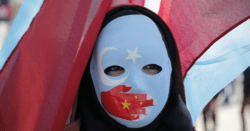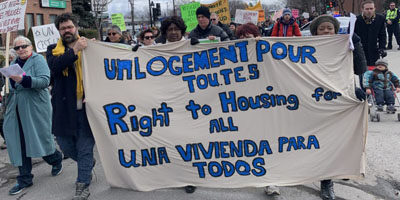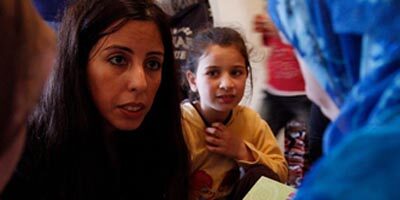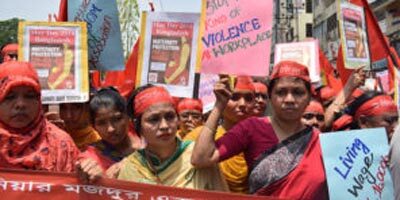Victor Leiva was one of the instructors of Caja Ludica, an art collective in Guatemala providing troubled youth with art and culture as alternatives to violence and gang-membership. The organization incorporates drama, dance, acrobatics, stilt-walking and juggling.
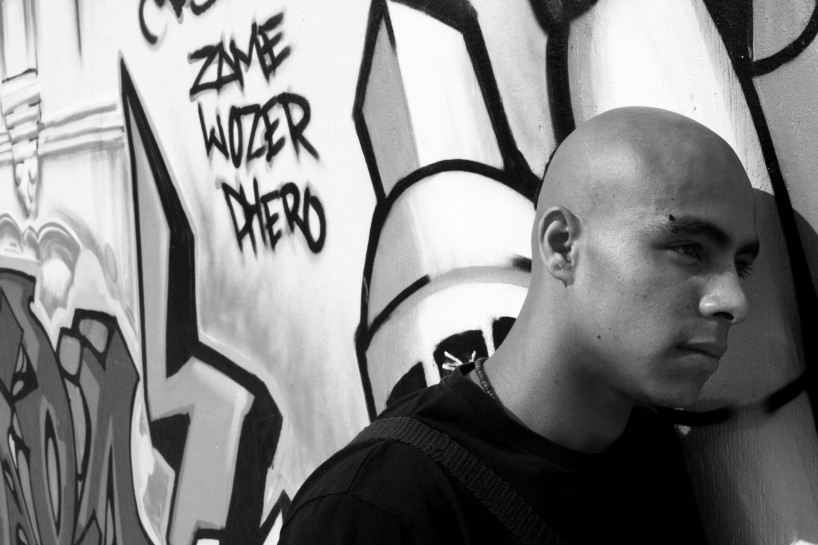
Victor Leiva left gang violence to pursue a life in art and community involvement. At 24 years old, he was murdered.
Photo courtesy of Christian Aid. (UK)
Although he turned to street gangs in his early years, Leiva eventually found art as an alternative. He was one of the collective’s founding members and also participated as a clown and stilt-walker. “I did my first parade in 2002. I’ve never forgotten it. I teach young people juggling and stilt-walking. It makes me very happy, and it makes me humble,” he told Christian Aid, a UK-based NGO, in 2007.
Leiva was assassinated in February, 2011 in a public square, the victim of gunshots fired by unidentified men who fled—another of the numerous individuals killed mysteriously in the country recently. 43 homicides per 100,000 have been recorded in Guatemala City, one of the highest figures in the Americas.
Other members of Caja Ludica have been assassinated in circumstances similar to Leiva’s murder. Of these, Saul Fernando Gonzalez Estrada was shot dead when unknown men in a vehicle opened fire on him before fleeing, witnesses reported. These deaths are consistent with executions carried out by extra-judicial death squads who aim for a social purge of individuals suspected of having gang affiliations.
Young artists, spiritual and community leaders, human rights activists and free thinkers in Guatemala face stigmatization from parts of the conservative society. So, these murders may be linked to the victims’ ways of thinking, dressing and expression.
“We still suffer stigmatization for the way we look and the way we think, even for small issues such as belonging to a youth community group. Any time that you do something different, people notice,” Samuel Ochoa, one of Caja Ludica’s founding members, told me in an email. “The problem arises when conservative thinking represses free thinking.”
Guatemala
Guatemala has become an integral component on the main route running cocaine from the Andes to North America, which has fostered a gang culture with power paralleling that of the state. There is no reliable data on the number of gangs presently operating in Guatemala, and these usually have smaller territorial components. Youth gangs are responsible for high levels of social violence, including pick-pocketing, mugging, theft and bus robberies. They also engage in organized crimes such as kidnapping, bank robberies and arms and drug-trafficking.
Despite the multitude of crimes, authorities have not made extensive attempts at investigating them, and those responsible may never be brought to justice. Given the power of gangs and police corruption in Guatemala, police authorities are often willing to ignore violence attributed to these, in exchange for compensation. According to news media, police officials are regularly used by gang members to carry out local drug sales and extortion.
“The country has become a dangerous place for everyone, especially for youth and women,” Ochoa said. Gangs provide a cohesive social group, protection and collective power for the average teenager unable to gain security, respect, identity and emotional expression any other way.
Work in Guatemala tends to be badly paid, so young people have only limited opportunities for material advancement. Gangs are a rational alternative to poverty in the country, being economically and socially self-sufficient. Before the existence of art collectives, there were not many other options.
While Caja Ludica focuses on community-building, it does provide some salaried employment. “We sell cultural services that sustain our organization and improve the members’ quality of life,” Bobby Ochoa, another member of Caja Ludica, told me in an email.
However, Ochoa does not believe financial compensation is a major motivation for people to join the collective. “People join because they identify themselves with this movement, and with communitarian art. One of the reasons is its cultural relevance. Another is that when you come to Caja Ludica, you have to confront yourself, you have to overcome your fears, and that is interesting to the people. They feel this challenge.”
In Guatemala, older people automatically associate teenagers with gangs, pushing non-members to the peripheries of society. Here, youth collectives play a part in fostering community integration, and creating identities for young people which do not rely on gangs.
The country’s history of easily accessible arms, desensitization to violence resulting from years of living with hostility, and a conservative societal mindset has given rise to groups other than street gangs, who similarly rely on violence to carry out their aims.
Extra-judicial death-squads
Extra-judicial death squads have recently emerged in the country, apparently to eliminate gang members. Off-duty police officials have been linked to these death squads, which engage in a sort of social purge and target young men with criminal records or suspected of having gang ties. Such executions have elements in common: vehicles without identification, large calibre weapons, more than one person involved, and delayed action by the authorities.
One of these death squads emerged in January 2011 in response to increasing gang violence, under the name La Patrulla, or “The Patrol,” comprising anonymous, masked men unsanctioned by the law.
In a press release regarding Leiva’s murder, Samuel Ochoa said, “We denounce and condemn this act. We are dismayed. It took us by surprise and it’s painful.” Ochoa said that despite the murders Caja Ludica would continue to persevere in its attempts at social change.
“We promote free thought, creativity, analytical thinking and trust, so that people feel part of something important,” he said, “We use art to make young people think about their future, about how they can help to transform the community where they live.”
Other initiatives
There are other organizations like Caja Ludica, all of whom hold the common belief that Guatemala needs social change. Among these are La Banqueta, Iqui Balam and Collective Artisana, which also focus on the arts.
La Banqueta offers an urban space for those individuals who want to engage in art but don’t have the resources to afford it at private art galleries and theatres. The seventeen members organize a wide variety of activities, including theatre, art exhibitions, concerts and puppet shows.
Iqui Balam grew out of attempts to bridge gang enmity, and re-sensitize individuals hardened by daily violence, through a positive theatre experience. The group of fifty members works to improve community services and has trained fourteen other youth groups to do similar work. UNICEF supports this initiative and has provided leadership training.
Collective Artisana is an NGO that, while also focusing on arts as do the previous groups, directs its focus toward Guatemalan women, not specifically youth. The organization aims to develop the women’s movement in Guatemala and to contribute to the recognition of women’s rights through artistic expression.

